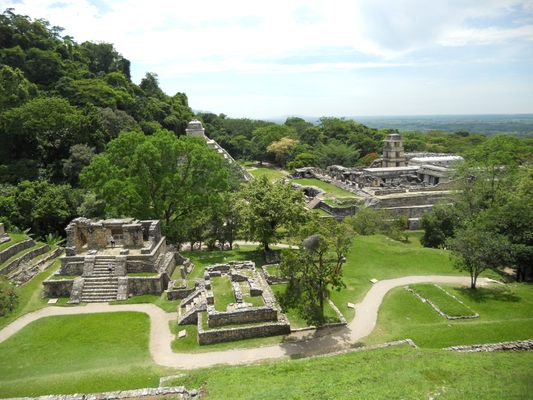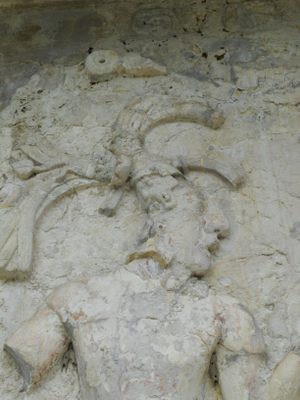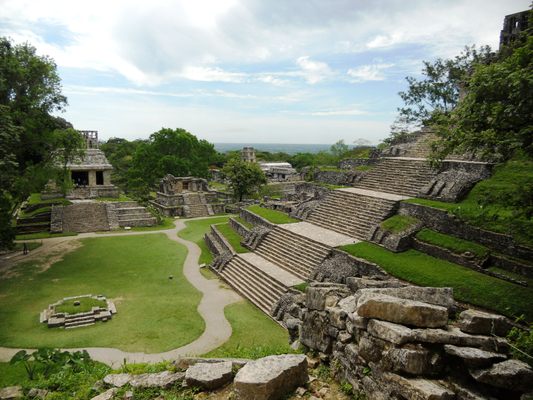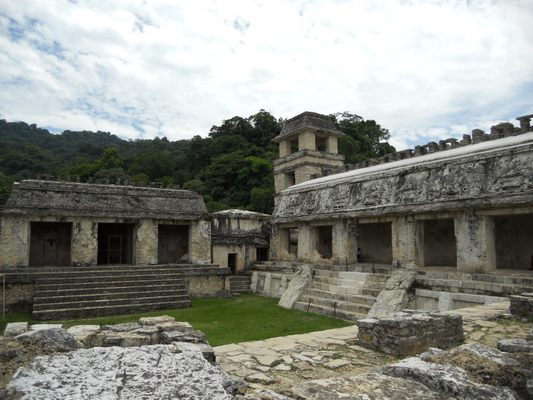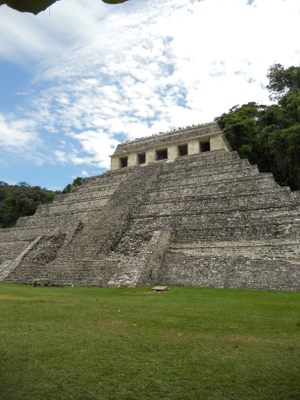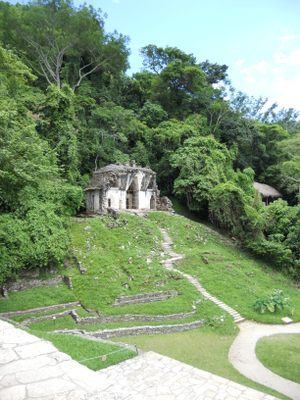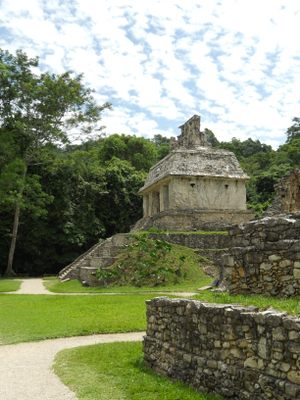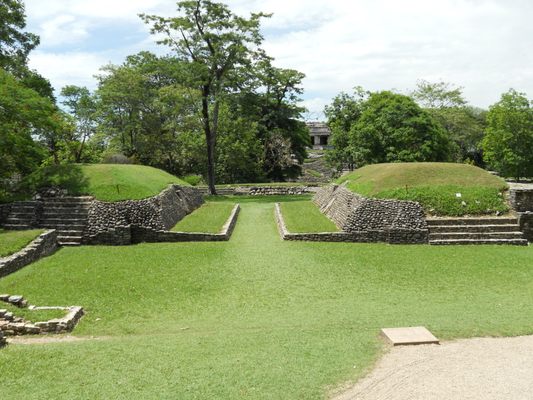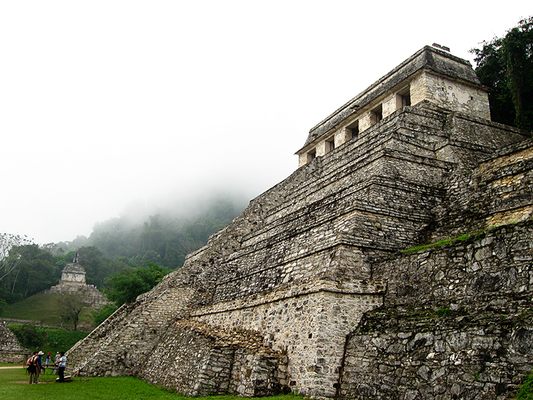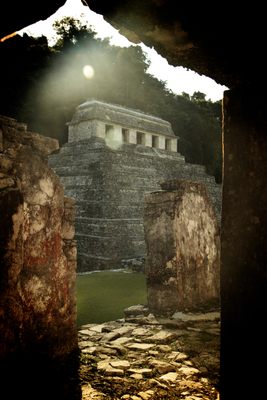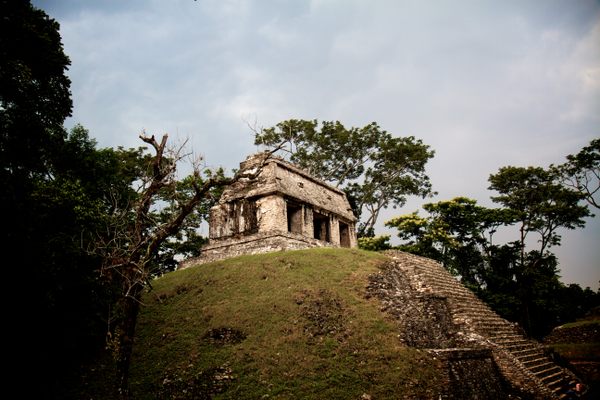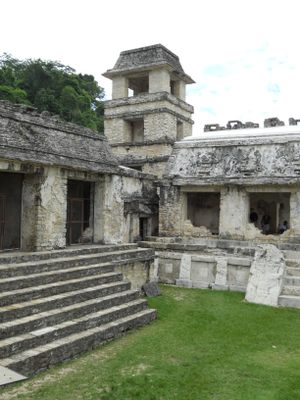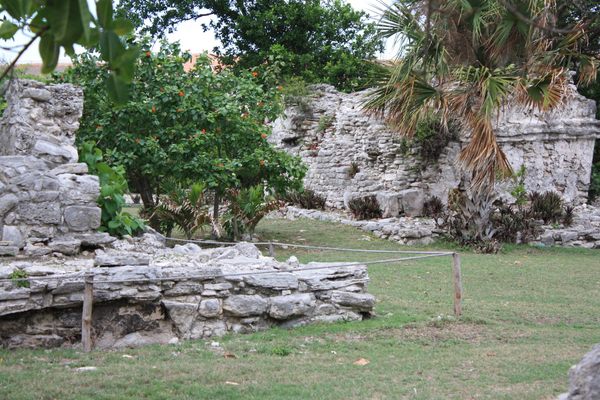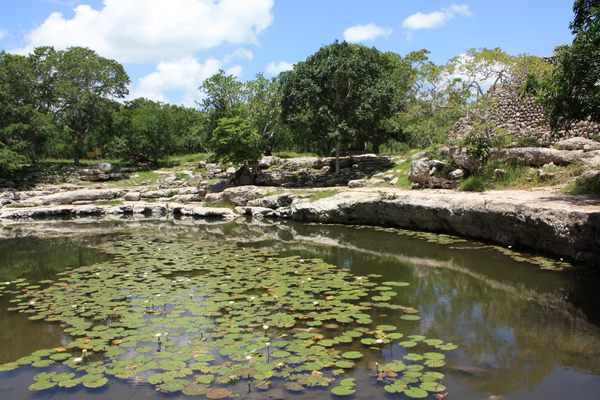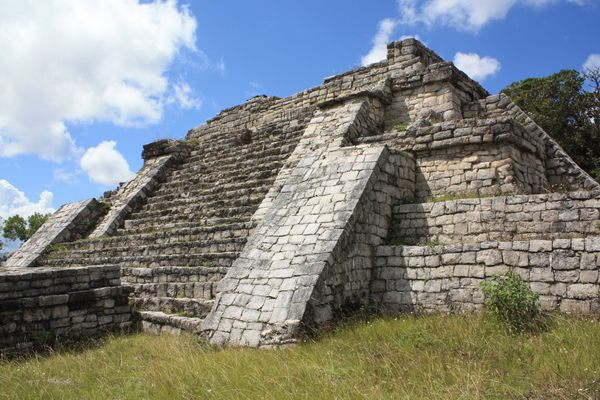About
In 1746, a Spanish priest and his family discovered the ruins of Palenque while looking for new lands to cultivate.
The first Europeans to lay eyes upon the magnificent site were so impressed, they were convinced that the Greeks or Romans had to be involved. It seemed impossible that anyone else could be responsible for such sophisticated and intricate work. Even the artists sent to draw copies of the elaborate reliefs and sculptures couldn't help but make King Pacal look more than a little bit like Apollo.
In 1786, King Charles the III of Spain demanded samples from the area, and the pillaging was not gentle. In the process of removing an elaborate carving on the leg of a throne, the entire throne collapsed, and gaping holes were left where the best examples of glyphs were found. However, his marauders missed the real treasure that wasn't uncovered until much later.
In 1949, Mexican archaeologists led by Alberto Ruz began excavations in earnest. In the Temple of Inscriptions, holes in the floor indicated something beneath. After three years of digging through rubble-filled descending staircases and walled-in corridors, archaeologists hit the jackpot.
A sarcophagus measuring 13-feet-by-seven-feet, weighing five tons, and covered with bas-reliefs sat in the center of a room decorated with murals and full of offerings. Beneath the stone slab lay the jade-laden body of King Pacal, who ruled until he died at the impressive age of 80.
The imagery carved into the face of the slab has been the subject of conspiracy theorists and alien chasers. From a Mayan archaeological viewpoint, the relief depicts the dead king, atop the setting sun, falling into the gaping jaws of the earth monster. From his body grows the Ceiba tree with a celestial bird perched on top.
About the same time the Mayan doomsday calendar theory popped up, those with wild imaginations turned the image sideways for a new interpretation. The image, they said, clearly depicts the king sitting behind the controls of a spaceship, his fingers turning dials, as he navigates his way back to the mothership. Obviously, the opinion that such "primitive" people as the Maya could not possibly have achieved such architectural feats without modern machinery or contact with the civilizations of the old world, has persevered.
The discovery of Palenque forever changed the study of Mayan archaeology as temples were now viewed to have a similar purpose as ancient Egyptian pyramids—important people were interred in them. Similar discoveries were made in Tikal shortly after.
Related Tags
Yucatan: Astronomy, Pyramids & Mayan Legends
Mayan legends, ancient craters, lost cities, and stunning constellations.
Book NowCommunity Contributors
Added By
Published
November 18, 2013
